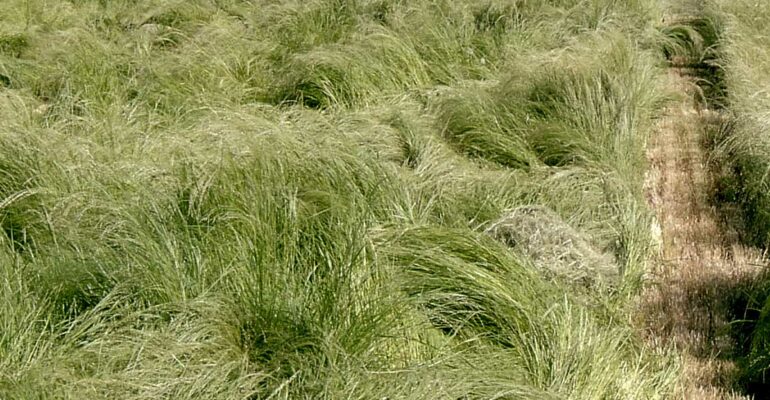Improved varieties of crops such as teff and cassava could alleviate hunger on the continent.
Teff is a staple cereal that is grown across Ethiopia, Eritrea, Somalia and parts of Kenya, where it feeds some 150mn people. It tends to grow tall and thin, though — which makes it fragile. And, once the spindly grain is knocked over, yields plunge by up to 30 per cent. But some believe that, if teff grew — and fed people — elsewhere, this problem would have long been solved through gene technology. “[If it was] a staple diet in England, for example, it would be a different teff”, argues Enock Chikava, director for agricultural development at the Bill & Melinda Gates Foundation. He is now one of many researchers trying to redress this technological imbalance, which has serious implications for the world’s ability to feed itself. As the number of people facing food insecurity has risen since 2016, Africa has found itself at the centre of the global hunger crisis. Conflict and climate change, especially, have hit crop yields hard, leaving Africans increasingly reliant on food imports and subject to the whims of global markets. But while billions of dollars and decades of work have gone into developing higher-yielding, more climate-resilient varieties of wheat and corn in the exporting countries of Europe and North America, the staples of Africa — such as millet, cassava and sweet potato — have been neglected.
“If we’re really, really serious about tackling food insecurity in the face of climate change, we have to focus on those crops, which are local [or] indigenous, and making sure that they are productive,” Chikava argues. Funded by both public and private money, initiatives across the continent have been established to do just this. Several are backed by the Gates Foundation, in partnership with CGIAR, a global research alliance that promotes food security. In Nigeria, for example, the International Institute of Tropical Agriculture (IITA), one of CGIAR’s research centres, has developed six new varieties of cassava that can produce between 25 and 30 tonnes per hectare — a big advance on the current six tonnes. According to the UN’s Food and Agriculture Organization, the root is a primary food source for 70mn Africans. Meanwhile, on the other side of the continent, the Gates Foundation is funding the Ethiopian Institute of Agricultural Research to carry out research into teff. Standard teff can reach about 140cm in height, Chikava says, but the EIAR’s new gene-edited varieties are only about 80cm tall, making them less prone to falling over or breaking. The next challenge for researchers, he adds, is increasing the size of the grain itself. Climate change is also driving farmers to reconsider old staples. Joyce Maru, global director of the sweet potato programme at the International Potato Center (CIP), another CGIAR research hub, says the tuber is making a comeback in African countries, because increasingly unpredictable seasons are making “traditional crops” more attractive. “Farmers want to transition or are trying to transition to more resilient cropping systems,” she says. “They’re also trying to diversify from the maize-based system.” Farmers usually grow maize for export, but Maru says tuber crops such as sweet potato have “characteristics [that can help] them to deal with climate stresses” — such as an unusually prolonged rainy season in Kenya, at a time when farmers would typically expect sunshine to dry their crops.
Although the sweet potato, she says, is both “very nutritious” and versatile — as well as the root, the leaves are edible, and it can be consumed by livestock as well as people — the CIP is working on new varieties that are better able to meet the demands of African farmers. Traits they are looking for include greater drought resistance, higher yields and earlier maturity, at three months instead of five. Governments are taking a keen interest in such innovations. Nigeria, for example, the world’s largest producer and consumer of cowpea, has embraced genetically modified versions of the legume as it seeks to meet ever-growing local demand, with an estimated 3.6mn tonnes consumed annually. In 2019, a variety developed by scientists at the Institute for Agricultural Research at Ahmadu Bello University in Zaria, northern Nigeria, won government approval, making it the country’s first genetically modified crop. It is resistant to the legume pod borer, an insect that can reduce yields by up to 80 per cent.
Michael Abberton, head of the genetic resources centre at IITA, says researchers in this area have multiple goals. “We are focused on the improvement of those crops with respect to yield but also nutrition and climate,” he says. The private sector is also getting involved in efforts to revive Africa’s neglected crops. Christoph Langwallner set up WhatIf Foods in 2020 to scale up the production of the bambara nut in West Africa and market it to a wider audience. Indigenous to the region, the legume grows well even in degraded soils and is resistant to drought. Despite its potential, it has tended to be produced mainly on a small-scale for domestic consumption, says Langwallner. Working directly with farmers in northern Ghana, WhatIf has stepped up bambara production in the country and is turning the nut into noodle and milk products, sold in Africa and further afield. The next step is to make these products locally, and Langwallner is raising funds in order to build the necessary factories. To power them, he intends to turn the plant residues into biochar — a stable form of carbon derived from organic matter — and, in doing so, to generate heat and, from that, electricity. Let’s focus on what can be produced locally and then power that with science and innovation Enock Chikava, Bill & Melinda Gates Foundation Processing the nuts where they are farmed would be “absolutely transformational”, he says, giving rise to “an entirely new job landscape” in the region. Others have similar aspirations. If they succeed, Chikava says, it would mark a reversal of the colonial model that has prevailed for the past hundred years or so, whereby raw commodities are produced in Africa but the value is added elsewhere. Some 70 per cent of the world’s cocoa is grown in West Africa, for example, but most of it is processed in Europe, meaning that African cocoa farmers earn as little as 6 per cent of a chocolate bar’s retail price, according to NGOs. Producing and processing locally is no easy feat, however. The lack of infrastructure in many African countries is a big hurdle, says Langwallner. Another is attitudes towards food, says Chikava — explaining that Africans, especially the burgeoning middle classes, increasingly aspire to western-style diets. Reinvigorating traditional crop varieties and finding a market for them will depend on a huge mindset shift, he says, giving the example of a friend in Mali who complained of being hungry — but, on being asked for what especially, responded: “French bread.” “We’re still talking about aspirational diets, made up of ingredients which you can’t have on the continent, so this is what we’re trying to reverse,” Chikava says. “Now let’s focus on what can be produced locally and then power that with science and innovation.”

